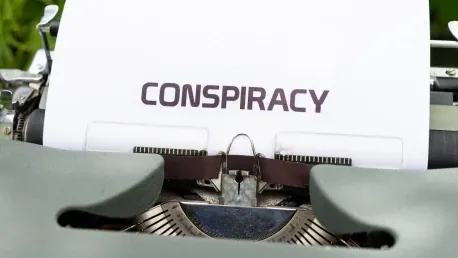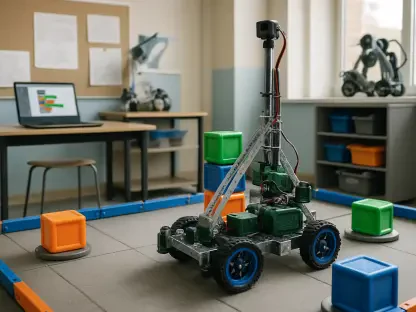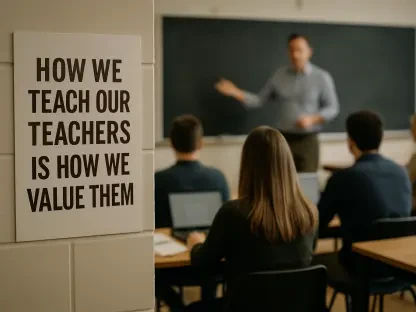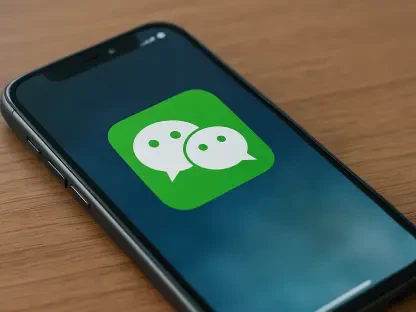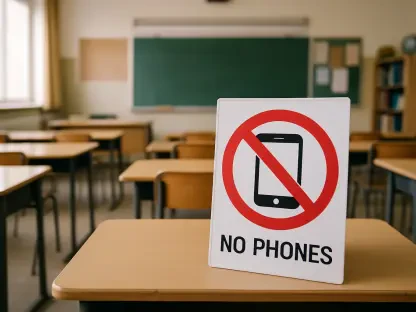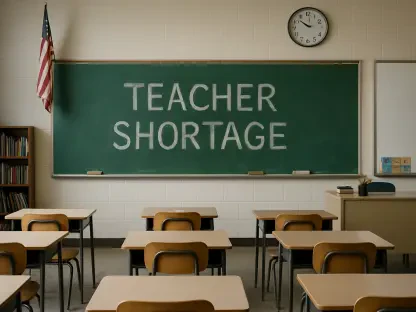In today’s digital age, teens are constantly bombarded with information from various online sources. While the internet offers a wealth of knowledge, it also harbors a significant amount of misinformation, including conspiracy theories. The prevalence of these misleading narratives among teens raises concerns about their ability to discern fact from fiction. A recent study by the News Literacy Project sheds light on this issue, revealing the urgent need for comprehensive media literacy education to help teens navigate their online environments effectively. The findings of this study highlight that while today’s youth have unprecedented access to information, they often lack the critical thinking skills necessary to separate truth from fiction in an online world proliferating with misinformation.
The Ubiquity of Conspiracy Theories Among Teens
As teens scroll through social media and other online platforms, they frequently encounter conspiracy theories. These theories range from the bizarre, such as the belief that the Earth is flat, to the politically charged, like the denial of the legitimacy of the 2020 U.S. presidential election. Misinformation about the safety of COVID-19 vaccines is also rampant, reflecting the ever-present nature of such false narratives. Despite not believing every conspiracy theory they come across, a staggering 81 percent of teens who encounter such content believe in at least one conspiracy theory. This indicates that a significant portion of their media consumption is influenced by misleading narratives, which underscores the pervasive nature of these false ideas and their impact on young minds.
The psychological appeal of conspiracy theories cannot be overlooked. These theories often provide a sense of community and understanding, fulfilling deep psychological needs. For teens, who are in a critical stage of identity formation, the allure of belonging to a group that shares “secret knowledge” can be particularly strong. This makes them more susceptible to adopting and spreading these false narratives. The sense of belonging and the perceived insider knowledge that conspiracy theories offer can be compelling, providing a deceptive sense of clarity and control over complex issues and events.
The Deficiency of Media Literacy Education
Despite the high exposure to conspiracy theories, media literacy education is sorely lacking in the United States. The study highlights that only six states have guidelines on teaching media literacy, and a mere three states mandate it in public schools. During the 2023-24 school year, fewer than 40 percent of teens reported receiving any media literacy education. This gap in formal education leaves teens vulnerable to misinformation and hampers their ability to evaluate the credibility of information sources. Without structured guidance on how to critically analyze online content, many teens are left adrift in a complex digital world filled with nuanced and often deceptive information.
The lack of media literacy instruction means that many teens are ill-equipped to navigate the complex media landscape. They struggle to differentiate between various types of online content, often mistaking branded content for news articles and failing to recognize opinion pieces despite clear indicators. This confusion extends to their ability to identify sponsored Google search results, with around 40 percent misinterpreting these results as indicators of popularity or quality. The deficiency in recognizing different types of information sources and their inherent biases further underscores the critical importance of integrating comprehensive media literacy education into school curricula nationwide.
Assessing Teens’ Ability to Evaluate Online Content
The study assessed teens’ ability to differentiate between various types of online content, revealing some concerning trends. More than half of the teens couldn’t identify branded content as advertisements, confusing them with news articles. Similarly, many teens failed to recognize opinion pieces despite clear indicators such as the term “commentary” in the headline. However, teens performed somewhat better in identifying sponsored Google search results as ads, although around 40 percent still misinterpreted these results. These findings illustrate a substantial gap in teens’ abilities to critically assess online information, which can have serious implications for their understanding of current events and overall media literacy.
When comparing the credibility of sources, teens showed a surprising trend. They were nearly equally split on whether a Coca-Cola press release or a Reuters article was more trustworthy regarding Coca-Cola’s plastic waste issues. This indicates a likely confusion between familiar brand recognition and actual credibility, highlighting the importance of media literacy education in fostering proper evaluation of news sources. The balance between brand familiarity and the rigorous scrutiny of source credibility remains a critical aspect that media literacy programs need to address to build a discerning and informed young audience.
Visual Literacy and Verification Techniques
On a positive note, teens demonstrated a relative proficiency in spotting false visual information. A significant majority, about two-thirds, could effectively use reverse image search techniques, and 70 percent successfully distinguished real photographs from AI-generated images. This suggests that some visual literacy skills are being developed, even in the absence of formal media literacy education. Yet, a third of teens still mistook a photo of a melting traffic light as solid evidence of extreme temperatures melting lights in Texas, indicating some gaps in visual literacy. These gaps highlight the need for enhanced education that not only addresses textual content but also the increasing prevalence of visual misinformation in the digital age.
The research also explored how teens verify information before sharing it on social media. Even though most teens do not actively follow news or receive media literacy instruction, those who do verify news tend to practice lateral reading, investigating a post’s source through quick internet searches. This method aligns with professional fact-checkers’ techniques and demonstrates a promising trend in how some teens approach information verification. However, many teens rely on less effective criteria like a website’s design or URL quality, partly due to outdated or surface-level verification techniques. This reliance on superficial indicators underscores the need for comprehensive and updated media literacy education that emphasizes effective research-based verification methods.
Trust in News and Active Engagement
A broader trend identified in the study concerns teens’ trust in news and their active engagement in seeking information. Teens are divided over whether to trust the news, with just over half believing journalists have a protective role in society. About 70 percent think news organizations are biased, and a significant 80 percent equate the bias levels of news organizations to those of other online content creators. Only a small fraction, 15 percent, proactively seek out news to stay informed, reflecting a troubling disengagement from traditional news sources and potentially serious consequences for informed civic participation. This polarization and skepticism towards news media can further complicate the task of educating teens about credible information sources.
Notably, the trusted news sources cited by teens include a range of outlets like CNN, Fox News, and NPR, along with platforms like TikTok and local TV news showing significant influence. A nearly unanimous sentiment among teens is the supportive stance on incorporating media literacy education into school curriculums, with 94 percent advocating for its necessity. This widespread recognition of the importance of media literacy among teens themselves is a positive sign, indicating a readiness and willingness to engage with programs that can enhance their critical thinking skills and understanding of the media landscape.
The Impact of Media Literacy Education
On a positive note, teens showed a notable ability in detecting false visual information. About two-thirds could effectively use reverse image search techniques, and 70 percent were adept at distinguishing real photographs from AI-generated images. This indicates some development in visual literacy skills, even without formal media literacy education. However, a gap remains as about a third of teens still mistook a photo of a melting traffic light for evidence of extreme temperatures melting lights in Texas. This emphasizes the need for enhanced education that addresses not just textual content but also the growing problem of visual misinformation in the digital era.
The research also examined how teens verify information before sharing it on social media. Even though most teens don’t actively follow the news or receive media literacy instruction, those who do verify information often use lateral reading. This involves checking a post’s source with quick internet searches, mirroring the techniques used by professional fact-checkers and indicating a positive trend. Nonetheless, many teens still rely on less effective criteria, like the design of a website or the quality of its URL. This reliance on superficial indicators highlights the urgent need for comprehensive and updated media literacy education that focuses on effective, research-based verification methods moving forward.
